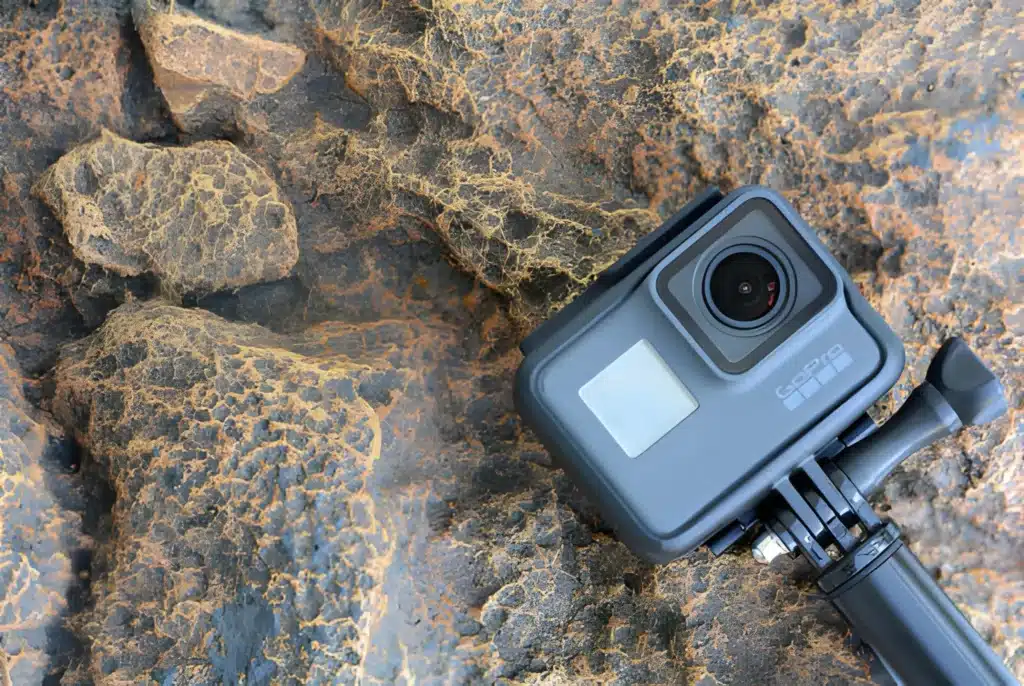Adventure photography used to mean carrying around heavy, fragile equipment that you’d baby like it was made of glass. Then GoPro came along and completely changed the game. A go pro camera can survive drops that would destroy a traditional camera, shoot underwater without expensive housing, and capture footage so smooth it looks like you hired a professional film crew. The latest models pack professional-grade features into packages smaller than most smartphones. Whether you’re mountain biking down rocky trails, surfing massive waves, or skiing through powder, these little cameras deliver results that seemed impossible just a few years ago.
Rugged Build Quality That Actually Works
Let’s start with the obvious—these cameras are built like tiny tanks. The Hero 11 and Hero 12 models are waterproof down to 33 feet without any additional housing. That’s not just splash-resistant marketing talk; these things can handle serious underwater action.
The shock resistance is equally impressive. GoPro cameras regularly survive drops from significant heights onto concrete, rocks, and other surfaces that would turn regular cameras into expensive paperweights. The secret is in the design—no protruding lens elements, a reinforced outer shell, and internal components mounted to absorb impact.
Temperature performance is another area where GoPro cameras excel. They’ll keep recording in conditions from 14°F to 95°F, which covers most adventure scenarios short of extreme arctic or desert conditions. The battery life does suffer in cold weather, but the camera itself keeps working when other electronics give up.
HyperSmooth Stabilization Technology
This is where GoPro really separates itself from smartphone cameras and cheaper action cameras. HyperSmooth stabilization uses a combination of electronic image stabilization and gimbal-like algorithms to create incredibly smooth footage, even during high-vibration activities.
The difference is dramatic. Footage shot while mountain biking over rough terrain comes out looking like it was filmed from a professional steadicam rig. The system works by cropping into the sensor and using the extra pixels to compensate for movement, so you get smooth footage without the bulk and fragility of a mechanical gimbal.
HyperSmooth 6.0 in the latest models takes this even further, with horizon leveling that keeps your footage level even when the camera is mounted at odd angles or rotating during action.
High-Resolution Capabilities in Compact Form
Modern GoPro cameras shoot 5.3K video at 60 frames per second, which is honestly overkill for most uses, but gives you incredible flexibility in post-production. You can crop into 5.3K footage and still end up with sharp 4K or 1080p video, essentially giving you digital zoom capabilities after the fact.
The high frame rates are where things get really fun for adventure footage. Shooting at 240fps in 2.7K lets you create those dramatic slow-motion sequences that make ordinary activities look cinematic. Jumping off a cliff becomes an epic moment when you can slow it down and see every detail.
Night performance has improved dramatically in recent models too. The larger sensors and improved processing mean you can capture usable footage in low-light conditions that would have been impossible with earlier GoPro generations.
Smart Features That Simplify Adventure Documentation
Voice control is one of those features that sounds gimmicky until you actually need it. When you’re hanging off a rock face or have your hands full with ski poles, being able to start and stop recording by voice command is genuinely useful.
The automatic highlight detection uses machine learning to identify the most interesting moments in your footage and create short highlight reels automatically. It’s not perfect, but it gets you 80% of the way to a finished video without any editing work.
GPS tracking builds a map of your adventures and embeds location data in your files, so you can remember exactly where that epic shot was taken. The data also syncs with fitness apps if you want to track performance metrics alongside your footage.
Battery Life and Power Management
Real-world battery life varies hugely depending on what resolution and features you’re using, but you can typically expect 1.5 to 2 hours of continuous 4K recording. That might not sound like much, but for adventure activities, you’re usually not recording continuously anyway.
The removable battery design means you can carry spares and swap them out quickly. GoPro’s official batteries are expensive, but third-party options work fine for most situations and cost a fraction of the price.
Charging while recording is possible with external power banks, which effectively gives you unlimited recording time if you can manage the cable routing. This is particularly useful for time-lapse projects or longer adventure activities.
Mounting System Versatility
The GoPro mounting ecosystem is probably the most comprehensive of any action camera brand. The basic mounts that come with the camera handle most common situations, but the real magic happens when you start exploring specialized mounting options.
Helmet mounts, chest harnesses, suction cup mounts for vehicles, and handlebar mounts for bikes all work seamlessly with the same mounting interface. Third-party manufacturers have created mounts for just about every conceivable situation, from surfboard fins to fishing rod holders.
Read more: How to Choose the Best Natural Collagen Supplements for Healthy Skin – Spiritual Meaning Portal
How a Sensor Tap Can Save Water and Add Convenience to Your Home – Spiritual Meaning Portal
Exploring the Benefits of Advanced Laser Eye Surgery in Melbourne – Spiritual Meaning Portal







